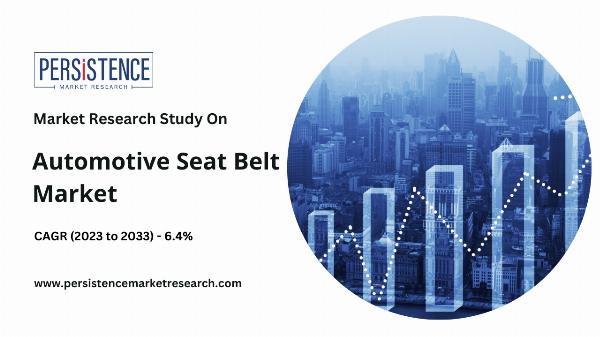Government Regulations Drive Growth in Automotive Pedestrian Protection Systems

Strong 8k brings an ultra-HD IPTV experience to your living room and your pocket.
The global automotive pedestrian protection system market is projected to grow from US$ 7.23 billion in 2024 to US$ 18.84 billion by 2031, with a CAGR of 14.7%. This growth is driven by increasing safety concerns, government regulations, and advancements in vehicle safety technologies aimed at reducing pedestrian fatalities. Europe leads the market, accounting for 30% of the share by 2024, largely due to stringent safety regulations like Euro NCAP’s focus on pedestrian protection. Key technologies driving the market include automatic braking and collision avoidance systems, which are expected to capture 45% of the market share. Leading companies such as Bosch and Continental are advancing sensor technologies like LiDAR and radar to improve pedestrian detection. With the rise in electric vehicles, which require enhanced safety measures due to their quiet operation, the demand for pedestrian protection systems is set to expand further.
In recent years, there has been a marked increase in the adoption of automotive pedestrian protection systems. A significant factor contributing to this growth is the introduction of stringent government regulations aimed at enhancing pedestrian safety. These regulations, focused on reducing pedestrian injuries and fatalities in road accidents, are not only influencing manufacturers to integrate advanced technologies into their vehicles but are also shaping the future of automotive design and innovation.
The Growing Importance of Pedestrian Safety
Pedestrian safety has become a critical focus for road safety organizations and governments worldwide. With the global rise in urbanization, traffic accidents involving pedestrians have been increasing, prompting policymakers to take action. According to the World Health Organization (WHO), nearly 1.35 million people die in road traffic accidents each year, and a significant portion of these fatalities involve pedestrians. In response, governments have started implementing regulations that require car manufacturers to install pedestrian protection systems in vehicles, driving the demand for advanced safety technologies.
Government Initiatives and Legislation Driving Change
One of the key drivers behind the growth of pedestrian protection systems in vehicles is the introduction of government-mandated regulations. The European Union, for instance, has enacted regulations that require all new vehicles to meet specific pedestrian protection standards. These regulations, which are part of broader vehicle safety standards, aim to minimize the severity of injuries in the event of a collision between a vehicle and a pedestrian.
The UN's Global Road Safety Targets, which aim to reduce road traffic deaths and injuries by 50% by 2030, also stress the importance of pedestrian safety. These global initiatives have led to the widespread adoption of advanced pedestrian protection technologies, including active safety features such as automatic emergency braking (AEB), pedestrian detection systems, and pedestrian airbags.
In the United States, the National Highway Traffic Safety Administration (NHTSA) has set guidelines for pedestrian safety, further accelerating the implementation of pedestrian protection systems in vehicles. These regulatory frameworks are pushing automakers to develop and deploy technologies that can detect pedestrians in the vehicle's path and react appropriately to avoid collisions or mitigate their severity.
Technological Advancements in Pedestrian Protection Systems
The rapid advancement of automotive technologies has played a crucial role in the development of pedestrian protection systems. These systems rely on various sensors, cameras, and radar technologies to detect pedestrians in the vehicle's vicinity. When a pedestrian is detected, the system can trigger automatic braking, adjust the vehicle’s speed, or even activate a pedestrian airbag to cushion the impact and reduce the severity of injuries.
One of the most promising advancements in pedestrian protection technology is the use of radar and lidar (light detection and ranging) sensors. These sensors can provide 360-degree detection around the vehicle, enabling it to identify pedestrians, cyclists, and other road users even in low visibility conditions, such as at night or during inclement weather. Additionally, AI-powered systems are enhancing the accuracy of pedestrian detection, making it easier for vehicles to distinguish between pedestrians and other objects.
Pedestrian protection systems are also evolving in terms of vehicle design. Some manufacturers are incorporating "active" hoods that can lift upon impact to create a cushioning effect between the pedestrian and the engine bay. This design modification, which is already seen in several modern vehicles, helps reduce the severity of head and chest injuries in the event of a collision.
The Role of the Consumer in Shaping Pedestrian Safety Trends
As consumers become more aware of pedestrian safety issues, they are increasingly demanding safer vehicles. This shift in consumer expectations is further fueling the adoption of pedestrian protection systems. Today, many consumers actively seek vehicles equipped with the latest safety technologies, including pedestrian detection and automatic emergency braking systems.
Automakers are responding to this demand by incorporating pedestrian protection features into their vehicles across a wide range of price points. What was once considered a high-end feature is now becoming standard in many mid-range and economy vehicles. This democratization of safety technology is a key factor driving the growth of the pedestrian protection systems market.
Challenges and Opportunities in Implementing Pedestrian Protection Systems
While the growth of pedestrian protection systems is promising, several challenges remain. One of the primary obstacles is the high cost of these advanced safety technologies, which can be a barrier for automakers, particularly in developing markets. However, as the technology matures and economies of scale come into play, the cost of implementing pedestrian protection systems is expected to decrease, making them more accessible to a wider range of consumers.
Another challenge is the need for further standardization in pedestrian protection testing. While there are various safety standards and regulations in place, inconsistencies between global safety standards can create confusion for manufacturers and consumers alike. Efforts are underway to harmonize pedestrian safety regulations, which will help streamline the development and deployment of these systems on a global scale.
Despite these challenges, the opportunities in the pedestrian protection systems market are vast. As the demand for safer vehicles continues to rise, automakers and technology providers are exploring new and innovative ways to enhance pedestrian protection. The integration of artificial intelligence, machine learning, and autonomous vehicle technologies presents exciting possibilities for the future of pedestrian safety.
The Future of Pedestrian Protection Systems
Looking ahead, the future of pedestrian protection systems is closely linked to the ongoing evolution of autonomous vehicles. Autonomous vehicles, which rely heavily on sensors and AI to navigate roads safely, are expected to revolutionize pedestrian safety. With their ability to predict and react to pedestrian movements in real-time, autonomous vehicles have the potential to significantly reduce pedestrian fatalities.
Furthermore, as governments around the world continue to tighten regulations and push for higher safety standards, automakers will be under increasing pressure to innovate. The demand for integrated pedestrian protection systems is set to increase, and the automotive industry is poised to meet this challenge head-on with cutting-edge technology and design solutions.
Conclusion
Government regulations play a pivotal role in driving the growth of automotive pedestrian protection systems. Through stringent safety standards and global initiatives aimed at reducing pedestrian fatalities, governments are influencing the automotive industry's trajectory and encouraging the development of innovative safety technologies. While challenges remain, the future of pedestrian protection looks bright, with ongoing advancements in technology and a global push for safer vehicles paving the way for a significant reduction in pedestrian injuries and fatalities on the road. As both consumers and regulators continue to prioritize safety, automotive pedestrian protection systems are expected to become a standard feature in all vehicles, ensuring a safer future for pedestrians worldwide.
Note: IndiBlogHub features both user-submitted and editorial content. We do not verify third-party contributions. Read our Disclaimer and Privacy Policyfor details.







